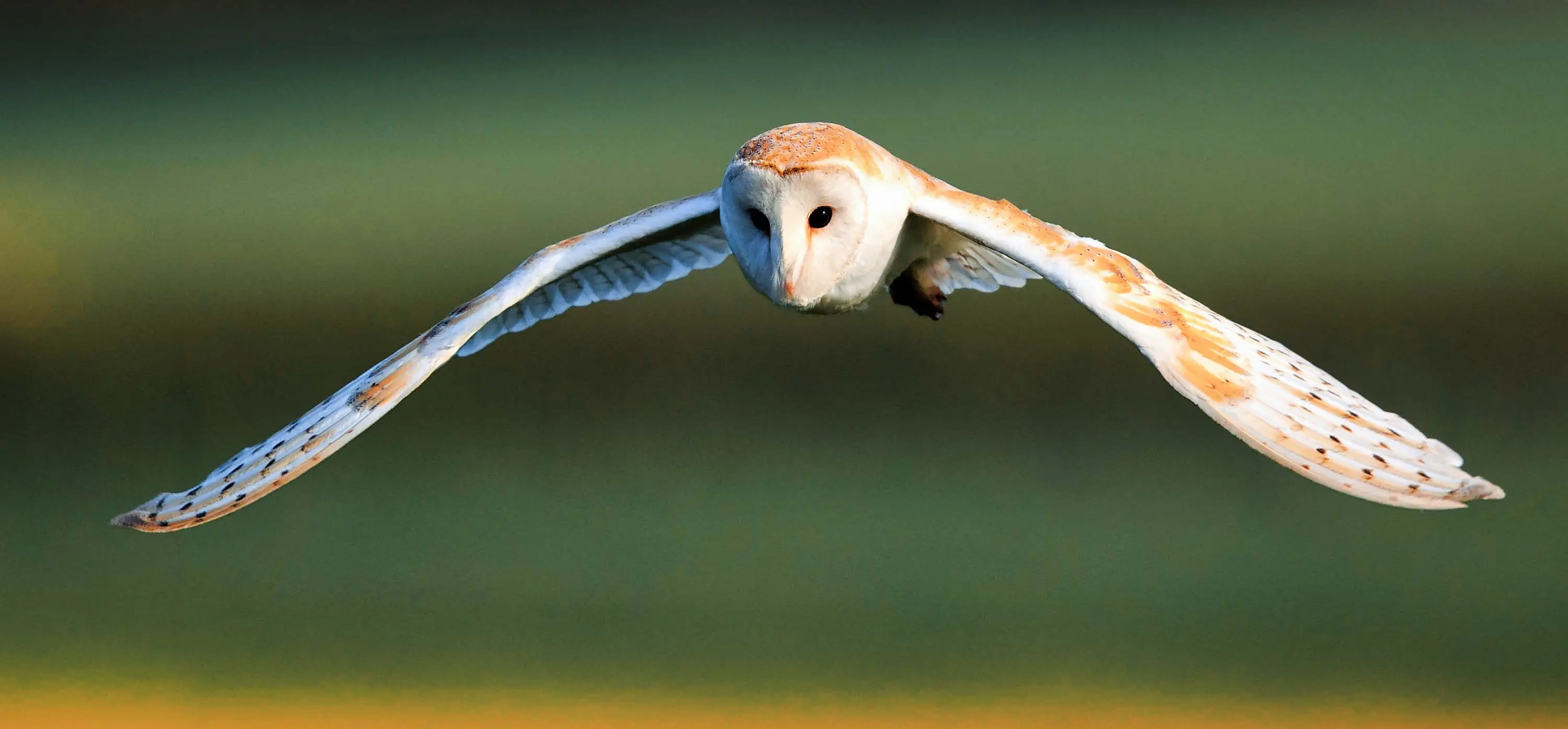
A favourite of the bird of prey species, the Barn Owl is one of the easiest to identify with its heart shaped face and white and brown plumage. They can be seen gliding silently over open fields hunting small mammals using their acute hearing to find their prey day or night in the vegetation.
Key Facts
Common name: Barn Owl
Scientific name: Tyto alba
Habitat: Farmland, marshes, reedbeds, moors
Diet: Voles, mice, rats and sometimes birds
Size: 33–35cm; wingspan: 85–93cm; weight 300g
Status: Resident breeding birds
Population size: 4,000 pairs
Conservation status GREEN (least concern)
Removed from AMBER in 2015, due to population rise/stability and increased survival of nests and chicks. Population estimates are complicated by its nocturnal habits making it difficult to survey, and by the fact the population can crash after a severe winter but recover within a year if weather is ideal and vole abundance high. The large number of chicks produced can also help the population rapidly recover after a poor year. Large fluctuations in populations are frequent.
Appearance
Barn Owls are golden brown and grey with a white underside, with heart-shaped faces and variable amounts of spotting. The males are slightly smaller and usually have almost pure white undersides, whereas females have more spots on their chest.
Lifespan
Their lifespans are short-lived, with an average in the wild of 4 years. Adults have a 72% year-to-year survival rate. Juveniles have less than a 40% chance of surviving their first year. The oldest known wild bird was just over 15 years (ringing recovery), and captive birds can live over 20 years.
Nesting
Barn Owls can breed from 1 year old and often nest inside farm buildings, tree cavities and sometimes in holes in rock faces or straw stacks. They readily take to artificial nest boxes, many of which are provided by Hawk and Owl Trust. 80% of UK Barn Owls are now thought to breed in nest boxes.
Breeding is very dependent on prey numbers; double brooding is not uncommon, and three broods occur when voles are very plentiful. Birds mate for life unless one of the pair is killed, when a new pair bond may be formed. The female does all the incubation, and she and the young chicks are reliant on the male for food before the chicks fledge.
Number of eggs: 4-6
Incubation: 32 days
Fledging time: 53-61 days
Habitat and Distribution
The Barn Owl has the title of the most widespread land bird in the world, occurring on all continents except Antarctica. They can be found in a huge range of habitats - absent only from polar and desert regions, the highest mountain ranges and some Pacific islands. While found in Scotland, they are not present in the Highlands due to a lack of suitable habitat. There has been rapid decline in Barn Owl numbers in Northern Ireland in recent years. This decline is due to habitat loss.
Movements
Non-migratory, British Barn Owls are astonishingly sedentary with the average dispersal of young birds being just 12km from where they fledged. Occasional European Barn Owls (darker-breasted Tyto alba guttata subspecies) are recorded, especially in south-eastern counties.
Feeding
Barn Owls specialise in hunting animals on the ground, and nearly all their food consists of small mammals which are located by sound, their hearing being very acute. The short-tailed field vole is the preferred prey species, caught in areas of rough grassland, and can form up to 85% of its diet. Barn Owls will also hunt hedgerows and other habitats where they take wood mice, bank vole, shrews and young brown rats. Small birds are also occasional prey, but daytime hunting owls are at risk of their prey being stolen by other birds of prey, especially Kestrel.
Although traditionally considered a nocturnal bird, British Barn Owls can often be seen hunting at dusk and dawn. They will even hunt during the day in winter and during the breeding season when they have young to feed. Barn Owls do not hoot but will utter a hiss or screech, often heard near the roost or nest.

